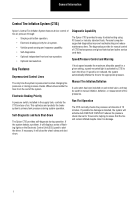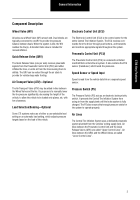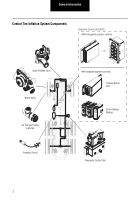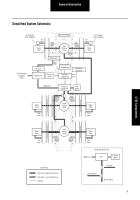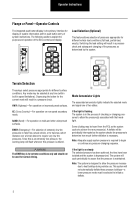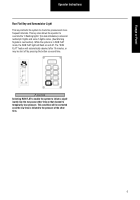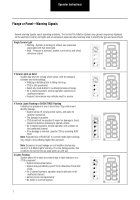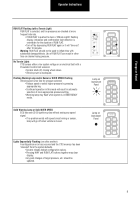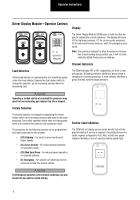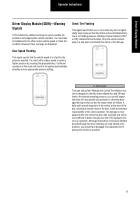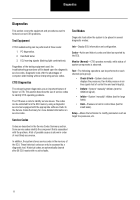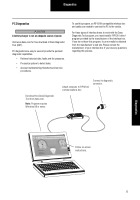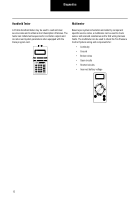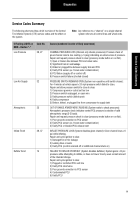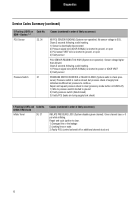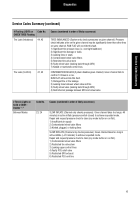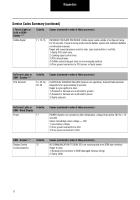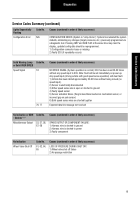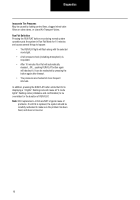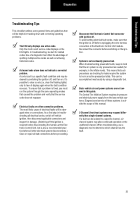DANA-AXTS0015 - Page 14 of 72
11
Diagnostics
Diagnostics
This section covers the equipment and procedures used to
find and correct CTIS problems.
Test Equipment
CTIS troubleshooting can be performed at three levels:
1.
PC diagnostics.
2.
Handheld tester.
3.
ECU warning signals (flashing light combinations).
Regardless of the testing equipment used, the
troubleshooting procedures will be based upon the diagnostic
service codes. Diagnostic tools offer the advantages of
computer-aided testing without interpreting service codes.
CTIS Diagnostics
The onboard system diagnostics are an important feature of
Spicer's CTIS. This section describes the use of service codes
to identify CTIS operating problems.
The CTIS uses a code to identify service issues. The codes
can be extracted from the ECU memory using a diagnostic
service tool equipped with the appropriate software. Refer to
the Service Codes Summary for more detailed information on
service codes.
Service Codes
Codes are described in the Service Codes Summary section.
Some service codes identify the component that is associated
with the problem. A list of possible causes is shown in order
of most likely occurrence.
In addition, the system stores service codes in the memory of
the ECU. These historical codes can only be accessed by a
diagnostic tool. Historical codes are automatically cleared
after 50 ECU resets with no active faults.
Test Modes
Diagnostic tools allow the system to be placed in several
diagnostic modes:
Info
—Display ECU information and configuration.
Codes
—Active and historic codes are listed as reported by
the ECU.
Monitor (Normal)
—CTIS operates normally, while status of
system components is observed.
Test
—The following operations can be performed on each
channel (axle group):
•
Check & Hold
—System checks and
displays the pressures, then holds pressure in air
lines (quick test of control line and seal integrity).
•
Deflate
—System "manually" deflates (test the
deflation signal).
•
Inflate
—System "manually" inflates (test for large
leaks).
•
Hold
—Pressure is held in control lines (test for
small leaks).
Setup
—Allows the technician to modify parameters such as
target tire pressures, etc.
Back to Top

